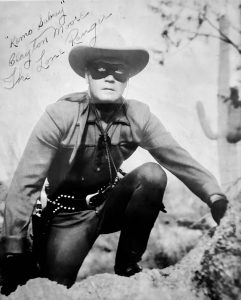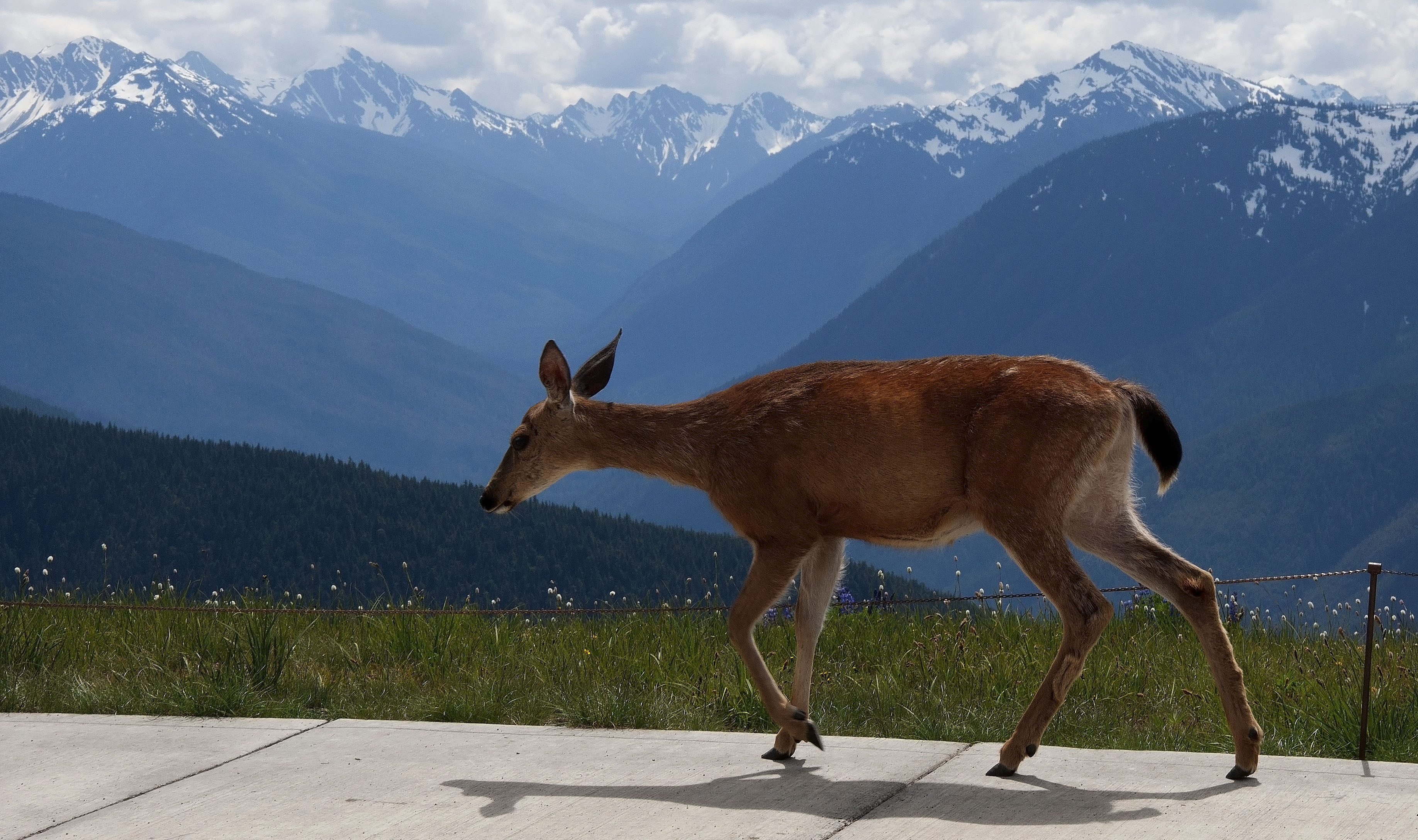The Time I Saw the Lone Ranger
The ink is faded but still legible on an 8×10, black-and-white photograph hanging in the bedroom. The inscription reads “Kemo Sabay,” Clayton Moore, The Lone Ranger. The masked avenger crouches in a desert setting, a saguaro cactus in the background. Besides the requisite black mask, the Lone Ranger wears a bandana around his neck, a long-sleeved snap pearl western shirt, a fancy belt with silver studs, and a revolver strapped to his right hip. He looks ready for action. He also appears to be sweating profusely.
When I was a kid, Clayton Moore, the Lone Ranger, came to Pleasure Island, a short-lived amusement park in Wakefield, Massachusetts, about an hour from our home in Allenstown, N.H. I was 7 or 8, so that would be in the early 1960s. The Lone Ranger television series ended in 1957, but that hardly slowed Moore, who continued to make public appearances dressed as the Lone Ranger for decades. His sidekick, Tonto, didn’t show up for this appearance. Jay Silverheels, a Mohawk Indian from the Six Nations of the Grand River reservation in Ontario, played Tonto. Moore was from Chicago.
The inscription on the photograph has long confused me. Tonto called the Lone Ranger “Kemo Sabe,” the more common spelling, though Moore’s version on my photograph — Kemo Sabay — occasionally pops up. The show led viewers to believe that Tonto was calling the Lone Ranger “faithful friend” or “trusty scout.” Tonto called the Lone Ranger Kemo Sabe in every show I recall. If the Lone Ranger ever reciprocated, I don’t recall it.
Kemo Sabe or Kemo Sabay. Potato, potahto. However it is spelled, the term is almost certainly made up, not from any specific tribal language. One account that sounds plausible, although it doesn’t necessarily mean it is true, is that the show’s director spent time at a boys’ camp in Michigan, near Mullet Lake, called Camp Kee-Mo Sah-Bee.
|———|

It was time to conduct research. Besides, it was too hot to bushhog by the time I escaped working at my air-conditioned paying job. I went to YouTube and found the first-ever television episode of The Lone Ranger, which aired on Sept. 15, 1949. The black-and-white show starts with the now-iconic William Tell Overture by Rossini. The pilot show provides the origin story of the Lone Ranger:
A half-dozen Texas Rangers are ambushed by the Butch Cavendish gang, betrayed by a bandit who purports to help the Rangers but leads them into the trap. Being bandits, the traitor is then shot by Cavendish. Before the ambush, Cavendish tells his men, “When a man goes down, I want lead pouring into him like a sieve.” All seven are left for dead.
But wait! One Ranger has survived, crawls to a nearby creek, and lies there, a water-soaked bandana across his face. And wait again! The traitor also has survived and crawled into the hills above the ambush site.
A few observations on this nascent television western in the early days of the medium. The death scenes are hokey, the dialogue stilted, the horses quite adept at picking their way up and down rocky trails. The black-and-white scenery is rugged and beautiful.
Enter Tonto, who finds the dead Rangers and the one fellow — John Reid — who is unconscious by the water. Tonto and Reid appear to have a history. Years earlier, Reid found Tonto after an attack (by other Indians, according to the plot) and saved his life. It is time to return the favor.
He tells Reid, “Why, you Kemo Sabe. You trusty scout.” (Tonto speaks pidgin English, of course.) He nurses him back to health. Tonto buries the five dead Rangers, including Reid’s brother, also a Texas Ranger. Reid has him dig a fake sixth grave. Tonto also fashions a mask out of Reid’s brother’s leather vest.
Bingo! The Lone Ranger is born. “No one is going to know I’m alive. I’ll wear a disguise of some sort,” he tells Tonto.
Tonto replies, “You’re all alone now. You, Lone Ranger.”
|———|
Television actors and pro athletes had to hustle to make ends meet in the 1960s, before massive financial contracts. I also saw Roy Rogers astride his horse Trigger as a child, several members of the Boston Celtics who were promoting a newly opened gas station (really), and Gino Cappelletti, the talented receiver for the Boston Patriots. I think he was promoting a furniture store.
My dad was diligent about finding such events and taking his kids to meet these larger-than-life folks. The photos I obtained are long gone, except for the photo of the Lone Ranger and his mate on the wall, an autographed photo of Mickey Mantle when he came to Longview to open one of his country cooking restaurants. I was always a Red Sox fan, brainwashed by birth to hate the Yankees, but who could resist an autographed, inscribed photo of the Mick, inscribed to me?
Certainly not me.
Leave a reply
Fields marked with * are required











